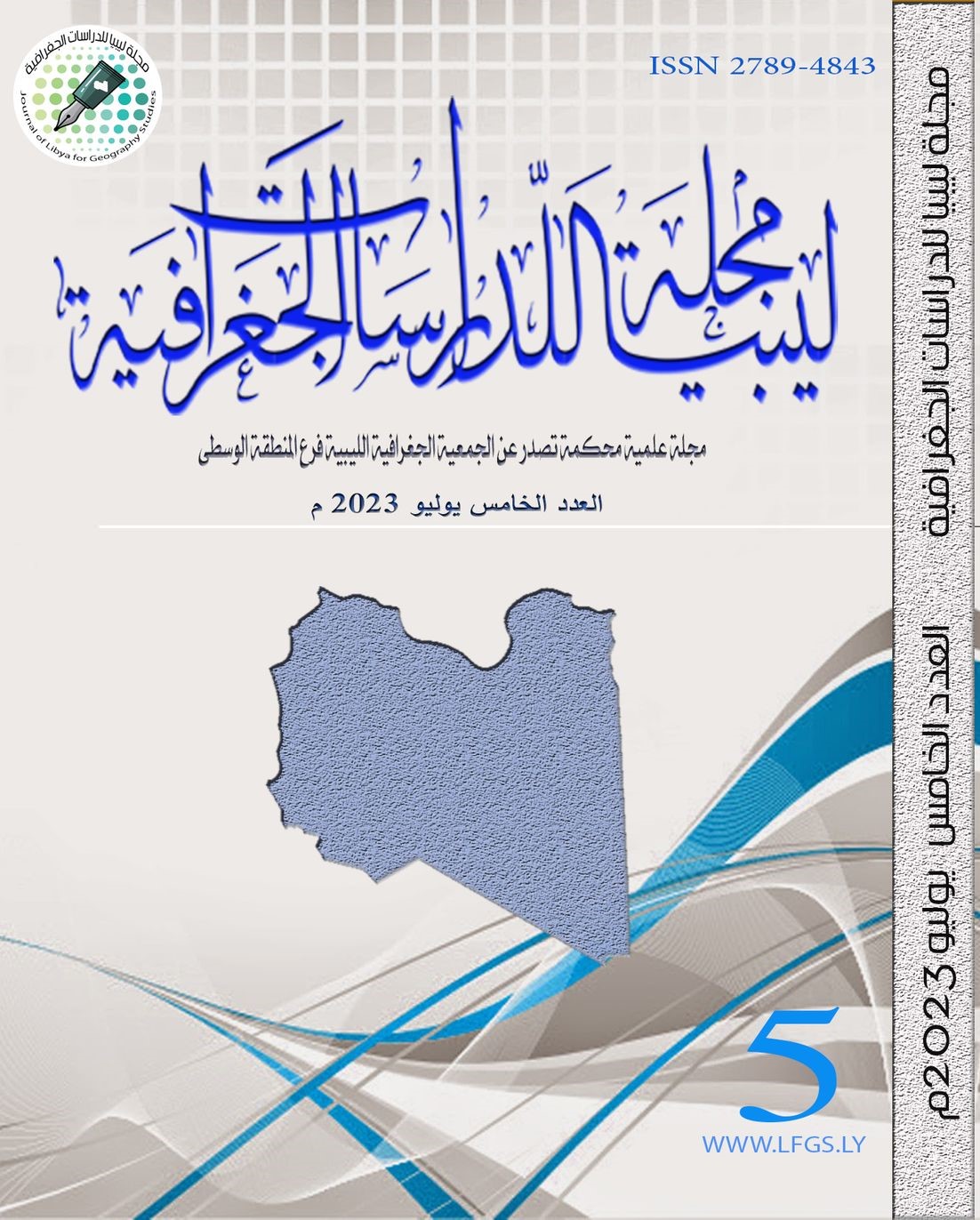Spatial analysis of visitors to the National Institute for Oncology in the municipality of Misurata
DOI:
https://doi.org/10.37375/jlgs.vi5.1793Keywords:
National Cancer Institute, Cancerous tumors, age groupsAbstract
The quality of services in general and health services in particular is an important element that contributes to the advancement and progress of countries. This study is of importance in detecting the spread of such diseases (cancerous tumors) in Libya and giving an indication for officials to pay attention to the National Institute for Oncology and provide it with diagnostic and therapeutic services to raise its level. The study aims to give a clear picture of the National Institute for Oncology in Misrata, And on the spatial dimension of the health services provided by the institute, and to identify the demographic characteristics of patients with oncological diseases in terms of age and gender. The study relied on a set of tools such as books, magazines, reports, statistics and data collected from the institute. The study also relied on the SPSS program to analyze the collected data and the arc GIS program to produce photographic maps of the subject of the study. One of the most important results of the study is that most of the visitors to the institute are from the western and central regions of the country, where the western region came in the first place with a rate of 40.18%, and the central region came in the second place with a rate of 35.21% of the total number of visitors during the study period. The highest category of attendees was the age group 60 years and over, with 49.97% of the total number of attendees being males. The highest age group was 60 years and over, with a rate of 28.33% of the total number of female visitors. Among them, breast cancer diseases in women came in the first place with a rate of 26.7% of the total diseases, in the second place colon diseases with a rate of 20.15% of the total diseases, and in the third place lung diseases with a rate of 10.17%.
References
- أبو عيانة، فتحي محمد، (1986)، مدخل الي التحليل الإحصائي في الجغرافيا البشرية، دار النهضة العربية للطباعة والنشر، بيروت لبنان.
- الدليمي، خلف حسين علي، (2009)، جغرافية الصحة والأمراض الوبائية في العالم، دار صفاء للنشر والتوزيع، عمان.
- المظفر، محسن عبد الصاحب، (2002)، الجغرافية الطبية محتوى ومنهج وتحليلات مكانية، دار شموع الثقافة للطباعة والنشر والتوزيع، الزاوية.
- جابر، محمد مدحت والبنا، فاتن محمد، (1998)، دراسات في الجغرافية الطبية، دار صفاء للنشر والتوزيع، عمان.
- سيف، محمود محمد، (2012)، أسس البحث الجغرافي، دار المعرفة الجامعية للطبع والنشر والتوزيع، الإسكندرية.
- الاسدي، كفاح صالح، البديري، كفاح داخل عبيس، (2013)، التباين المكاني للإصابة بالأمراض السرطانية في محافظة النجف الاشراف للمدة 2011-2005م، مجلة جامعة الكوفة، كلية الآداب، المجلد (1)، العدد (17).
- الهاشمي، عبد الرضا مطر، عبيس، كفاح داخل، (2021)، التوزيع الجغرافي للإصابة بالأمراض السرطانية في محافظة القادسية للمدة (2010/2019)، مجلة القادسية للعلوم الإنسانية المجلد(24) العدد(3).
- الزاملي، فيصل كريم هادي، وآخرون، (2020)، التباين المكاني والزماني لأمراض السرطان في محافظة النجف الاشرف للمدة 2015-2019م، مجلة القادسية في الآداب والعلوم التربوية ، العدد4 ، ج2.
- بدور، فواز، و المحمود، أيهم، (2021)، التوزيع الجغرافي لمرض أورام السرطان الخاضعين للعلاج الشعاعي في مناطق مختلفة من سوريا، مجلة جامعة تشرين للبحوث والدراسات العلمية سلسلة العلوم الصحية، المجلد(43)، عدد(1).
- يونس، عبد المجيد المهدي، (2020)، قياس جودة الخدمات الصحية في المعهد القومي لعلاج الأورام صبراتة (دراسة ميدانية)، مجلة الأستاذ الجزء الأول، العدد (18) ربيع 2020م.
- التقارير الصادرة من قسم التوثيق والإحصاء الطبي بالمعهد القومي لعلاج الأورام لسنوات 2015/2016/2017/2018/2019/2020م، بيانات غير منشورة، 2022م.














